Mining operations on the Moon A number of space agencies are conducting the first mining operations on the Moon. One of the princip...
http://kingofdkingz99.blogspot.com/2010/05/mining-operations-on-moon-number-of_31.html
 |  |
Mining operations on the Moon
A number of space agencies are conducting the first mining operations on the Moon. One of the principle resources for extraction is Helium-3, for use in the reactors of fusion power plants. This material is very rare on Earth - but abundant on the lunar surface. It is exceedingly valuable, a single shuttle-load being enough to power an entire country for several months.
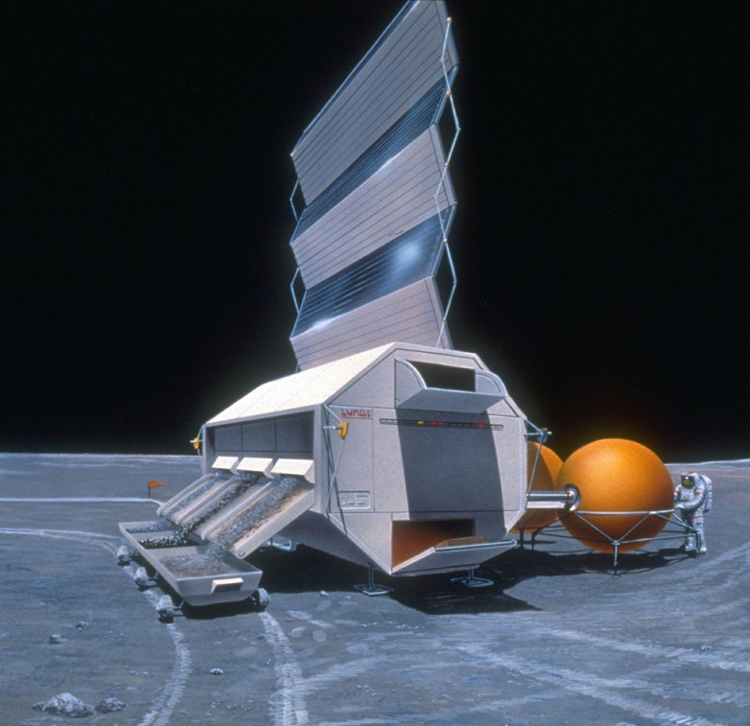
Smaller, faster, hi-tech automobiles
Soaring living costs - along with exhorbitant taxes and measures relating to the environment - have led to cars and other vehicles evolving into smaller, cheaper, more energy-efficient designs.
More people than ever before are choosing to live and work alone, while the number of children per couple has also dropped sharply; two additional factors which have led to these lighter, more compact vehicles - a large percentage of which carry no more than one or two passengers.
Nearly all cars in the developed world are now computer-controlled, while traffic flow and road management issues are handled by advanced networks of AI. The resulting fall in congestion has boosted some economies by tens of billions of dollars.
The inherent safety of being controlled by machine, rather than human hands, allows for much greater speed of travel: over 200mph on some motorways. Even when crashes do occur, which is extraordinarily rare, the built-in safety features and toughened materials (including the use of carbon nanotubes) means that fatalaties are becoming virtually non-existent.
Meanwhile, a number of the largest automakers are conducting long term research into hovering/flying vehicles, based on existing military technology.
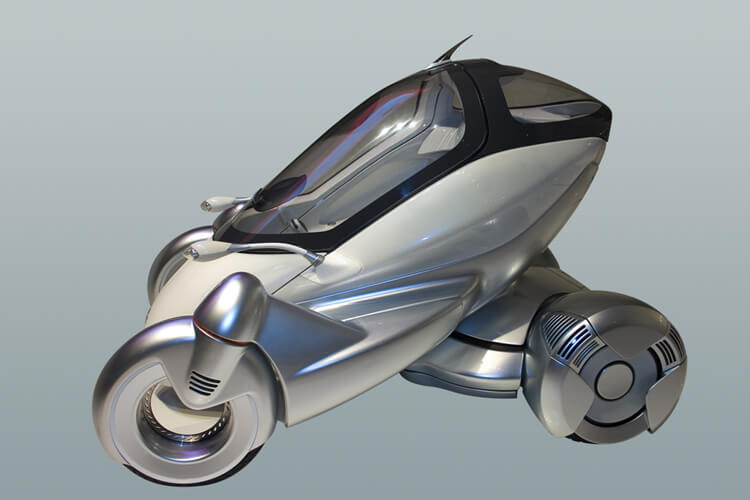
A typical mid-range car of 2050.
Genetically engineered "designer babies" for the rich
The most advanced (and controversial) techniques involve manipulating the brain to improve the child's intelligence, behaviour and personality. Many conservative and religious groups decry what they see as the commercialisation of the human body.
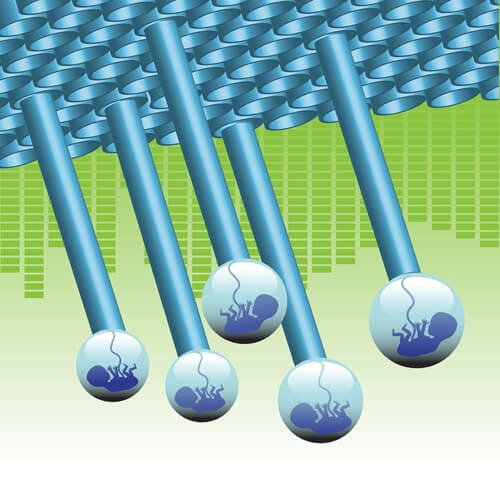
2055
Traditional media have fragmented and diversified
By now, traditional Western news corporations no longer exist. News gathering, analysis and distribution has instead fragmented - shifting to millions of creative individuals, bloggers, citizen journalists and small-scale enterprises. Each of these works cooperatively and seamlessly, utilising a "global commons" of instantly shared knowledge and freely available resources. This includes information retrieval not only from cyberspace but also the real world; embedded in everything from webcams and personal digital devices, to orbiting satellites, robots, vehicles, roads, street lamps, buildings, stadia and other public places.
Even people themselves have become a part of this collection process. Bionic eye implants (for example) can relay data and footage on the spot, in real time, from those willing to participate.
Traditional Western TV channels have largely disappeared, replaced by unique "personalised" web channels, covering practically any subject or combination of subjects imaginable. These are filtered and customised to the exact tastes and requirements of the individual and are viewable anywhere, at anytime. They can be highly interactive and are often experienced in virtual reality settings, rather than on a screen. This is especially true of movies, many of which have non-linear plotlines allowing the viewer to influence the outcome themselves, or even to become characters within the film.
Mass advertising, too, has undergone a revolution in Western societies. Some of the oldest outdoor media still exist - such as posters, billboards and leaflets - which continue to survive in holographic and other forms. However, online web and televisual product/service information is now accessed almost entirely from on-demand, advanced customer feedback networks along with automated, semantic web assistants. Together these can provide instant, factual and trustworthy information on a highly personalised level: automatically filtering any marketing bias or corporate propaganda which might have influenced a consumer in the past.
Despite the increased choice and empowerment, one major consequence of this fragmentation (a trend which began in the 1980s) has been increased isolation of the individual. A decrease in the shared experience of media has led to a further decline in Western family and community life.
Poorer nations are still reliant on traditional forms of media gathering and information dissemination. However, in the decades to come, many of them will begin to make the transition too - thanks to exponential trends in price performance and improved access to web technology.

Global population plateaus at 9 billion
The global population has reached over 9 billion by now.* The population is also getting older, putting a huge strain on government welfare systems, labour supply and employment. Nearly a quarter of the planet is aged over 60 now - and with so many breakthroughs in medicine, this trend will only continue.
As has long been the case, most of the population growth has occurred in the developing world. However, better education along with improved access to contraception and other birth control methods is having a significant effect on reducing the number of children per couple.
The world's population is therefore beginning to level off and plateau.
Damage inflicted by climate change is also having an effect now, with vast numbers killed by drought, flooding, hurricanes and other extreme weather events; not to mention disease, lack of resources and various ongoing wars. The humanitarian crises of past decades are beginning to look modest by comparison, as whole swathes of Africa are now becoming essentially uninhabitable. Much of the Middle East, too, is facing complete collapse.
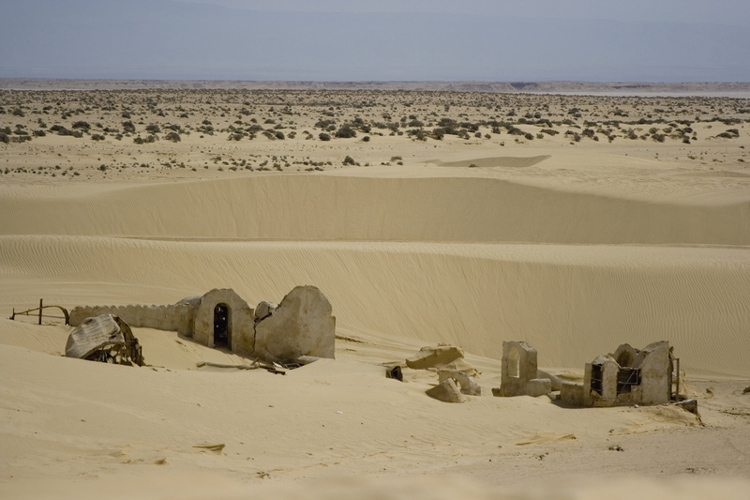
Over the next few decades, droughts will increase tenfold, making agriculture impossible for many regions. In other parts of the globe, intense tropical storms have inundated cities. Everywhere, there are people being caught up in resource wars and other conflicts. Enormous shantytowns begin to form in some regions, as tens of millions are displaced.* Poverty and crime are rife in Africa, South America, and parts of southern Asia. Many of these places are so destitute that they are being reclassified as "fourth world" countries.* Pollution has also contributed to large numbers of deaths, especially in Asia.
Over two-thirds of people live in urban areas by this time,* and there are vast, sprawling megacities in all corners of the globe. In the very densest parts of the developed world, some of the tallest skyscrapers reach kilometres in height, are occupied by millions of people, and are effectively becoming cities in their own right with self-sufficient energy and food production. Many residents within these gleaming towers spend almost their whole lives in these buildings, with little need or want to venture outside.
The population of the USA has reached nearly 450 million now (up from 303 million in 2008), with Hispanics more than doubling their share of the population to 29%, and Asians going from 5% to 9%. Whites who are not Hispanic have become a minority, with their share dropping to 47%. They made up 85% of the population in 1960.* Due to climate change, most of the population growth has occured in the north-eastern states, which have better access to water and are generally more stable. California, Arizona, New Mexico and Texas have seen massive declines in wealth and influence.
2056
Fully synthetic humans are becoming technically feasible
In 2010, scientists created the first synthetic cell. Mycoplasma laboratorium was an entirely new species of bacterium, with a man-made set of genetic code, placed on a synthetic chromosome inside an empty cell. Using its new "software", the cell could generate proteins and produce new cells.*
This was followed in subsequent years by a variety of specialised organisms. Some were able to generate new vaccines and medicines; others produced biofuels and similarly useful products.
As the decades went by, larger and more complex life forms were created in the laboratory, including multi-celled animals large enough to be seen by the naked eye.
Synthetic genomics continued to advance exponentially, driven by the breakneck pace of information technology. Large animals - variants of birds, fish and mammals - became available with fully customisable limbs, sensory organs and other features, for use in a variety of commercial, scientific and industrial roles.
By 2056, the number of cells that can be synthesised in a single organism has reached over 100 trillion: equal to the total number in the human body.* A tremendous level of debate is occurring during this time over the possibility of "synthetic people" entering the population. What rights and freedoms would they have? Countless moral, ethical and legal arguments are raised.
For now, the vast majority of countries are unable to authorise the technology; the cultural lag is simply too great. Just as stem cells were controversial in the USA during the early 2000s, the creation of synthetic humans represents science advancing faster than many people are willing to accept.
However, a small number of countries - notably China - secretly push ahead with the project. Test subjects are successfully created with the help of AI, then made to take part in biotechnology experiments. Although hidden from public view, rumours begin to emerge of horrific abuses.*
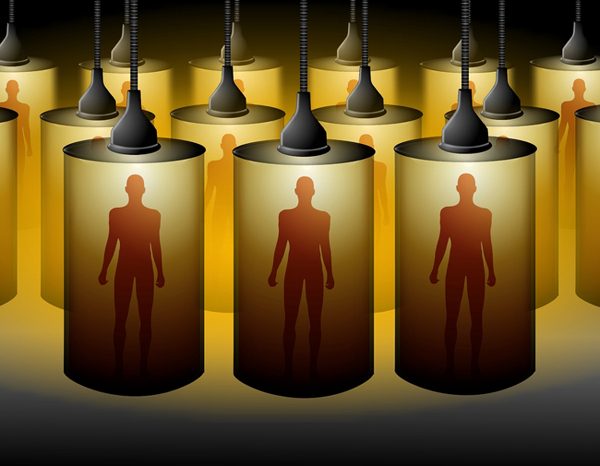
2057
Computers reach another milestone
Individual PCs of today have AI systems equivalent to all of the human brains which ever existed on Earth.*This is a result of Moore's Law - the trend in computer processing power which has been increasing exponentially for over a century.
Computers are becoming so powerful that many high-level tasks in business and government are being handed over directly to them. For years, software had lagged behind hardware in development, which impeded the spread of AI, but this is no longer the case. Ever more sophisticated programs have begun to create a chain reaction of self improvement cycles. This has led to an "intelligence explosion", with some of the biggest political decisions on the world stage now being influenced by sentient machines.
Of course, there are controls and regulations in place to guide these actions (to prevent the use of nuclear missiles for example). Nevertheless, it is becoming obvious to everyone by now that machines are quite literally taking over the world.
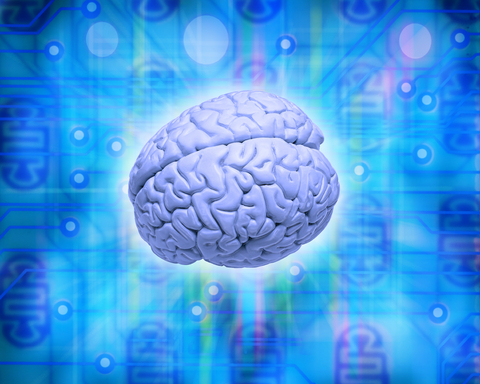
Handheld MRI scanners
The ability to scan, analyse and diagnose the body has taken a huge leap forward by now. Hi-res, 3D imaging of internal structures and brain activity is now possible using real-time video rather than static photos. This can be accomplished with devices no bigger than a camera.*
In the early 2000s, these machines were so bulky that they filled whole rooms.* Scans typically required half an hour or longer to create. They were also highly expensive: upwards of a million dollars for a state-of-the-art model, with each individual scan costing hundreds of dollars.
A new generation of machines began to evolve, based on supersensitive atomic magnetometers, able to detect the tiniest magnetic fields. These replaced the huge doughnut-shaped magnets that had been used in the past. By the late 2050s, MRI scans had become as quick and easy as taking a photograph, with a hundredfold decrease in cost.*Healthcare programs in developing countries would benefit particularly from this.
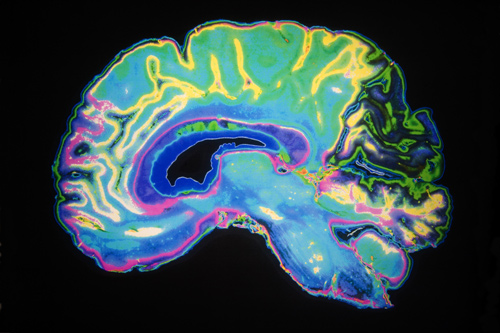
2058
Construction of a radio telescope on the Moon*
The telescope is 100m wide and located on the Moon's far side, giving it a stable platform with slow rotation rate (0.5 arcsec/sec), beyond the interference of Earth's atmosphere and cluttered radio background.* This provides astronomical images with a clarity unmatched by any observatory on Earth or in space. Individual stars, billions of light years away, can be seen assembling into the first galaxies.
The telescope is situated within an impact crater. Both it and the surrounding infrastructure are built using a mixture of epoxy, self-assembling carbon nanotubes and material from the Moon itself - drastically reducing costs.*
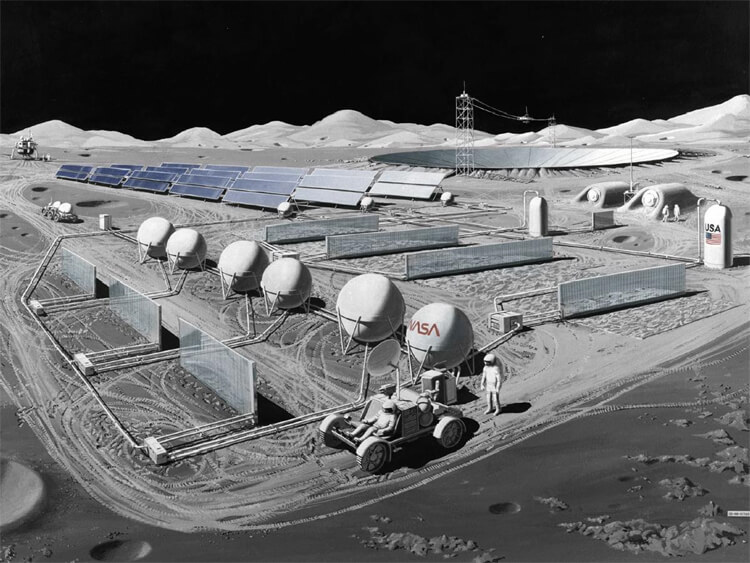
Credit: NASA


.jpg)



